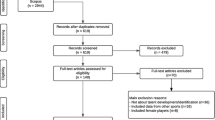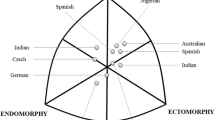Abstract
Badminton has evolved into a blink-and-miss event, with powerful smashes dominating rallies. Due to the fact that the speed of smashes has increased, there are controversial decisions when the shuttlecock hits the ground during the match. Therefore, the aim of the present study was to identify the importance of challenge request effectiveness in elite badminton according to contextual-related variables. The sample was composed of 56 shuttlecock challenges requested during 20 matches (quarter-final, semi-final or final matches) from the Olympic Games (Rio de Janeiro, 2016) and the Word Badminton Championship (Glasgow, 2017). The Crosstabs-Command and the Binomial logistic regression were applied in order to identify the interactive effects on challenge success of each contextual variable (gender, requester player, next point winner, score-line, game, game interval, games in favor, challenges left per game, match-outcome and player’s international experience). The main results identified that the success of a challenge is affected by the request with less efficiency when the player requests the hawk-eye (odds ratio [OR] = 0.65) and when the player that request the hawk-eye is the loser of the match (OR = 0.21). The identified trends allow players to improve strategic plans that involve selecting the most appropriate moment to request the calling Line Review.
Zusammenfassung
Badminton stellt zunehmend hohe kognitive Anforderungen an den Spieler. Da die Schlaggeschwindigkeiten beim Smash zunehmen, entstehen kontroverse Entscheidungen über das Auftreffen des Balles im Feld. Hierzu besteht neuerdings die Möglichkeit für die Spieler, eine optische Entscheidungsprüfung zu beantragen. Das Ziel der vorliegenden Studie bestand darin, die Effektivität dieser beantragten Prüfung („challenge request effectiveness“) in Abhängigkeit von verschiedenen Variablen zu kontextualisieren. Die Stichprobe bestand aus 56 Challenges aus 20 Matches (Viertelfinale, Halbfinale, Finale) der Olympischen Spiele (Rio de Janeiro, 2016) und der Badminton Weltmeisterschaft (Glasgow, 2017). Mittels binominaler logistischer Regression wurden die Interaktionseffekte zwischen dem Challenge-Erfolg und weiteren Variablen (Geschlecht, folgender Punktgewinner, Spielfeldlinie, Spielintervall, Spielstand, verbleibende Anzahl an Challenges, Spielergebnis und Spielerfahrung der Spieler) berechnet. Das zentrale Ergebnis besteht darin, dass der Challenge-Erfolg abfällt, wenn der Spieler eine Prüfung durch das technische hawk-eye erfragt (OR = 0,65) und wenn der beantragende Spieler der anschließende Verlierer des Matches ist (OR = 0,21). Diese Trends erlauben eine strategisch bessere Planung der beantragten Entscheidungsprüfungen.
Similar content being viewed by others
References
Abdullahi, Y., & Coetzee, B. (2017). Notational singles match analysis of male badminton players who participated in the African Badminton Championships. International Journal of Performance Analysis in Sport, 17(1–2), 1–16.
Abernethy, B., Gill, D. P., Parks, S. L., & Packer, S. T. (2001). Expertise and the perception of kinematic and situational probability information. Perception, 30(2), 233–252.
Alam, F., Chowdhury, H., Theppadungporn, C., & Subic, A. (2010). Measurements of aerodynamic properties of badminton shuttlecocks. Procedia Engineering, 2(2), 2487–2492.
Araujo, D., Davids, K., & Hristovski, R. (2006). The ecological dynamics of decision making in sport. Psychology of sport and exercise, 7(6), 653–676.
Bal, B., & Dureja, G. (2012). Hawk eye: a logical innovative technology use in sports for effective decision making. Sport Science Review, 21(1–2), 107–119.
Baumeister, R. F. (1984). Choking under pressure: self-consciousness and paradoxical effects of incentives on skillful performance. Journal of personality and social psychology, 46(3), 610.
Cabello-Manrique, D. (2000). Análisis de las características del juego en el bádminton de competición. Su aplicación al entrenamiento. (PhD Thesis Technical University of Madrid). http://www.cafyd.com/REVISTA/ojs/index.php/bbddcafyd/article/view/123. Accessed: 3 Feb 2018
Cabello-Manrique, D., & Gonzalez-Badillo, J. J. (2003). Analysis of the characteristics of competitive badminton. British journal of sports medicine, 37(1), 62–66.
Chiminazzo, J. G. C., Barreira, J., Luz, L. S., Saraiva, W. C., & Cayres, J. T. (2018). Technical and timing characteristics of badminton men’s single: comparison between groups and play-offs stages in 2016 Rio Olympic Games. International Journal of Performance Analysis in Sport, 18(2), 245–254.
Collins, H., & Evans, R. (2012). Sport-decision aids and the “CSI-effect”: why cricket uses hawk-eye well and tennis uses it badly. Public Understanding of Science, 21(8), 904–921.
Endsley, M. R. (1995). Measurement of situation awareness in dynamic systems. Human factors, 37(1), 65–84.
Field, A. (2013). Discovering statistics using IBM SPSS statistics. London: SAGE.
Jackson, S. A. (1995). Factors influencing the occurrence of flow state in elite athletes. Journal of applied sport psychology, 7(2), 138–166.
Klein, G. A. (1993). A recognition-primed decision (RPD) model of rapid decision making. In G. A. Klein, J. Orasanu, R. Calderwood, & C. E. Zsambok (Eds.). Decision making in action: Models and methods (S. 138–147) Westport, CT, US: Ablex Publishing.
Laffaye, G., Phomsoupha, M., & Dor, F. (2015). Changes in the game characteristics of a badminton match: a longitudinal study through the Olympic Game finals analysis in men’s singles. Journal of sports science & medicine, 14(3), 584.
Landau, S. (2004). A handbook of statistical analyses using SPSS. Boca Raton: Chapman & Hall, CRC press LLC.
Lee, K. T., Xie, W., & Teh, K. C. (2005). Notational analysis of international badminton competitions. ISBS-Conference Proceedings Archive, 1(1), 387–390.
Lees, A. (2003). Science and the major racket sports: a review. Journal of sports sciences, 21(9), 707–732.
Mackenzie, R., & Cushion, C. (2013). Performance analysis in football: a critical review and implications for future research. Journal of sports sciences, 31(6), 639–676.
Mann, D. T., Williams, A. M., Ward, P., & Janelle, C. M. (2007). Perceptual-cognitive expertise in sport: a meta-analysis. Journal of Sport and Exercise Psychology, 29(4), 457–478.
Ming, C. L., Keong, C. C., & Ghosh, A. K. (2008). Time motion and notational analysis of 21 point and 15 point badminton match play. International Journal of Sports Science and Engineering, 2(4), 216–222.
Murray, S., James, N., Hughes, M. D., Perš, J., Mandeljc, R., & Vučković, G. (2016). Effects of rule changes on physical demands and shot characteristics of elite-standard men’s squash and implications for training. Journal of sports sciences, 34(23), 2170–2174.
Neville, T. J., & Salmon, P. M. (2016). Never blame the umpire—a review of Situation Awareness models and methods for examining the performance of officials in sport. Ergonomics, 59(7), 962–975.
O’Donoghue, P., & Holmes, L. (2014). Data analysis in sport. Abingdon-on-Thames: Routledge.
Ofoghi, B., Zeleznikow, J., MacMahon, C., & Raab, M. (2013). Data mining in elite sports: a review and a framework. Measurement in Physical Education and Exercise Science, 17(3), 171–186.
Saketh, R. V. K. (2017). Five fastest smashes in Badminton history.Sportskeeda. https://www.sportskeeda.com/badminton/five-fastest-smashes-in-badminton-history. Accessed: 12 Jan 2018
Willoughby, K. A. (2002). Winning games in Canadian football: a logistic regression analysis. The College Mathematics Journal, 33(3), 215.
Acknowledgement
The present study was partially supported by the Ministry of Economy and competitiveness of Spain with the project “Estudio de los complejos de juego y los perfiles derendimientoenbádmintondeéliteCOMPLEXBAD” (DEP2015-67231-R).
Author information
Authors and Affiliations
Corresponding author
Ethics declarations
Conflict of interest
L. Primo, A. Gutiérrez-Suárez and M.-Á. Gómez declare that they have no competing interests.
For this article no studies with human participants or animals were performed by any of the authors. All studies performed were in accordance with the ethical standards indicated in each case.
Rights and permissions
About this article
Cite this article
Primo, L., Gutiérrez-Suárez, A. & Gómez, MÁ. Analysis of challenge request success according to contextual variables in elite badminton. Ger J Exerc Sport Res 49, 259–265 (2019). https://doi.org/10.1007/s12662-019-00591-4
Received:
Accepted:
Published:
Issue Date:
DOI: https://doi.org/10.1007/s12662-019-00591-4




